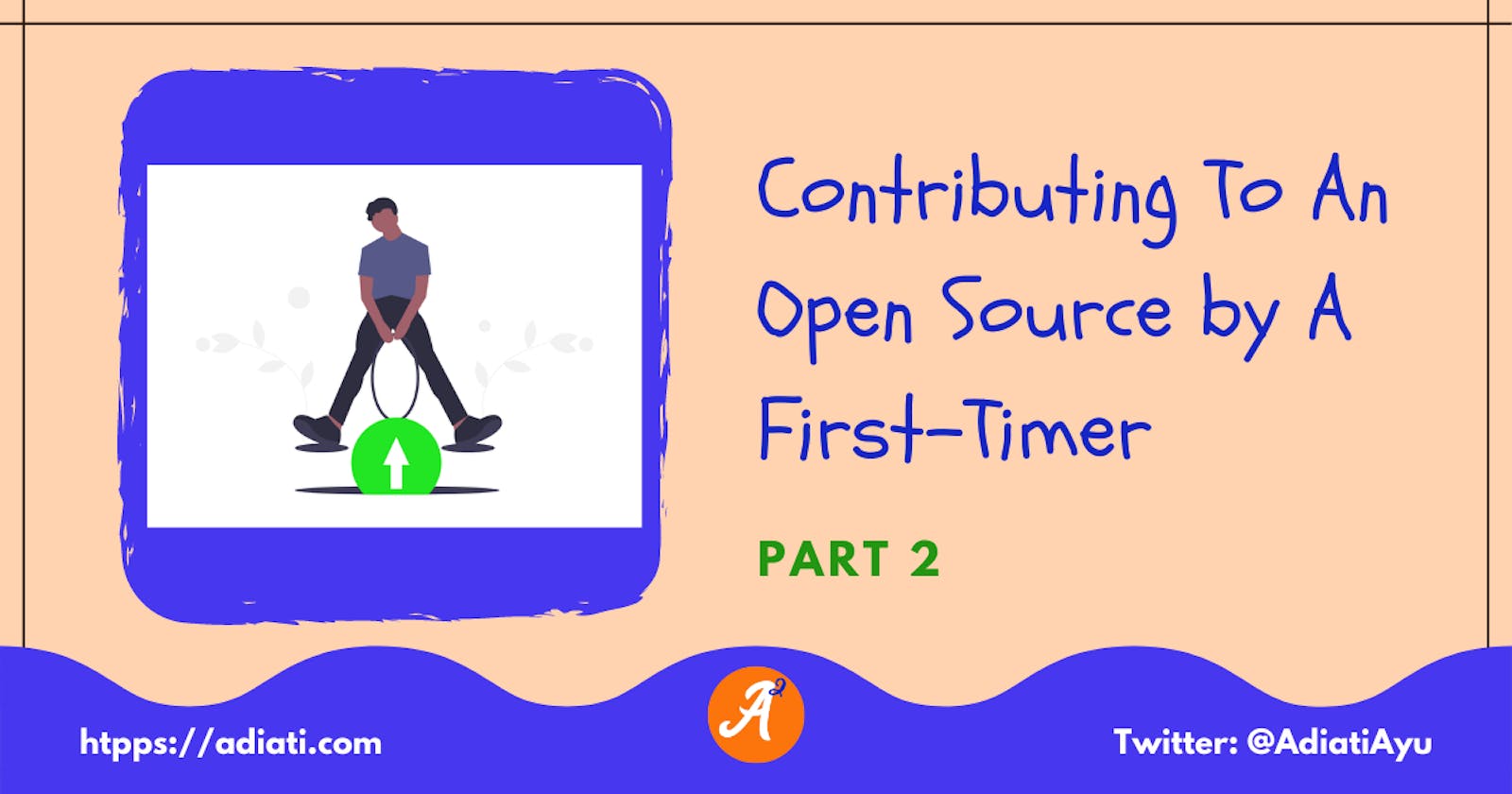Hello Fellow Codenewbies 👋
In the previous post, we have committed our changes.
So now it's the time to push our changes, right?
The answer is not yet.
Remember that we are working with an open-source, where more contributors work on various things for the repo.
Maybe when we worked on our changes, a pull request was merged.
If so, the original repo now has new updates than what we have cloned.
It is good practice to ensure that we have an up-to-date repo before pushing our changes by syncing our fork repo.
✏ EDIT
Before we sync our fork repo, we must configure a remote that points to the upstream repo.
Configure Remote That Points To The upstream Repo In Git
List our current configured remote repo for our fork
git remote -vIf we haven't configured a remote that points to the
upstreamrepo, we will get:origin <fork-repo-url> (fetch) origin <fork-repo-url> (push)Add a new remote
upstreamrepo that will be synced with the forkgit remote add upstream <original-repo-url>original-repo-urlis the HTTPS URL of the original repo we fork.Check if the new
upstreamhas now been added.git remote -vNow we should get:
origin <fork-repo-url> (fetch) origin <fork-repo-url> (push) upstream <original-repo-url> (fetch) upstream <original-repo-url> (push)
From Syncing To Pull Request
Fetch
We will fetch all the data from the up-to-date repo by running this command:git fetch upstreamNavigate to our local default (
main) branchgit checkout mainMerge the updated repo to our local default branch
git merge upstream/main📝 Additional Note (With Caution)
There is a way to complete both
git fetchandgit merge.git pull upstream main⚠ Caution
git fetchcan be considered the "safe" option, whilegit pullcan be considered unsafe.
You can read more explanations about them here.Navigate to our feature branch and push our changes
git checkout <branch-name> git push✏ EDIT
When I contributed to the open-source, there was no update on the
upstreamrepo. I could just push the changes after runninggit fetch upstreamandgit merge upstream/mainwithout updating the feature branch. But what if there were changes on theupstreamrepo? I researched and found this article along the way. I created a new repo, and I've tried it out myself.
👇
Suppose there are changes in theupstreamrepo. After navigating to the feature branch and before pushing our changes, we need to update our feature branch.git checkout <branch-name> git merge main git pushThere is a possibility that we will get this error after we did
git push:fatal: The current branch <branch-name> has no upstream branch. To push the current branch and set the remote as upstream, use git push --set-upstream origin <branch-name>We can copy-paste the instruction and run the command.
However, this practice is not recommended because this option has been deprecated.
One recommended way to push:git push -u origin <branch-name>And here comes the last step, creating a
Pull Request.- Go to the
upstreamrepo on GitHub - Create a
pull requestby clicking on the green button of "New Pull Request". - Include here a reference to issues, add descriptions of our changes, and submit
- Go to the
Now our pull request has been submitted, and we just need to wait for the owner/maintainer to review our changes and merge them.
Conclusion
Working with open-source could be intimidating for a beginner or a self-taught like me, who never collaborates and contributes to it.
I always thought I could "break" somebody else's repo if I made a mistake.
But how it works is the owner/maintainer of the repo will review our pull request before merging it. They will tell us when there is something that we need to fix before they merge our pull request.
And whenever we encounter some troubles, errors, or conflicts, we can always communicate it to the owner/maintainer. They will help us walk through it.
So it's actually not as scary as I imagined before.
Through this experience, I also learned that even when we are working in our own repo, it would be a good practice to create a new branch to work on features.
Note:
This post is one of my TIL notes based on my experience contributing to Virtual Coffee's open-source.
Your experience or steps that you should / would take could differ from what I had.
Thank you for reading!
Last but not least, you can find me on Twitter. Let's connect! 😊

